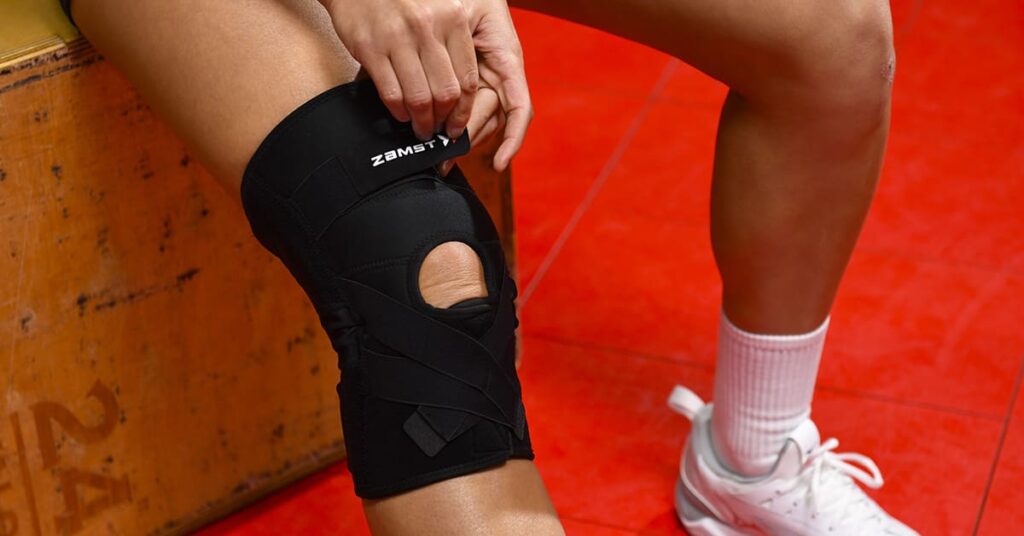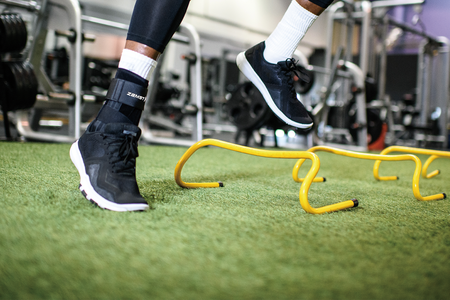ACL tears are one of the most devasting injuries in sports because of its prevalence in athletes. Secondly, its long rehab, 9-12 months to return to sports is devasting for the young athlete both physically and mentally.
According to research, the incidence of female ACL tears to male is 3.5 times greater in basketball and 2.8 times greater in soccer.1 Overall, because of the intrinsic differences between male and female athletes, women are two to eight times likely to tear their ACL to their male counterparts.
With that being said, understanding the factors contributing to this phenomenon is crucial for injury prevention and improved sports performance. The categories of risks factors are anatomical, environmental, strength, hormonal and biomechanical.
Anatomy
One significant factor that affects the female athlete seems to be the anatomic differences. It’s been long believed that females have a wider pelvis than the male.
However, women have a narrower pelvis and ratios between hip width to femoral length seems to be a more important measure than absolute width.
More importantly the femoral notch seems to be more of the prevalent factor. Smaller notches have been associated with increased rate of ACL injury. Regardless of the anatomical differences one thing we know is strength is a huge component to reducing ACL injuries.
Environment
The sports culture and training environment may contribute to the higher incidence of ACL injuries in female athletes.
Women have historically had less resources when it comes to training facilities, equipment, strength and training programs. For example, young female athletes in soccer and basketball have less strength programs at a young age which leaves them susceptible to injuries especially the ACL. Tailoring training programs to account for these differences can be instrumental in injury prevention.
Strength
Muscle imbalances also play a role. Females tend to have stronger quadriceps compared to hamstrings, creating an imbalance that can impact knee stability.
Strengthening exercises that focus on the hamstrings and stabilizing muscles around the knee can help address this imbalance and reduce the risk of ACL injuries.
The hamstring acts as a dynamic protector of the ACL by pulling the tibia posteriorly (backwards) reducing strain on the ACL. Therefore, strength training programs should have an emphasis on hamstring strengthening.
Another contributing factor is neuromuscular control.
Research suggests that women may exhibit different movement patterns and neuromuscular control strategies than men. Training programs that emphasize proper landing techniques, balance, and proprioception can enhance neuromuscular control, reducing the risk of ACL injuries.
Hormones
The role of hormones in ligament laxity has also been a subject of recent research.
Hormonal fluctuations, particularly during the menstrual cycle, may impact ligament properties and susceptibility to injury. One study showed a significantly greater than expected percentage of ACL injuries during midcycle. Studying these hormonal influences can lead to more individualized training approaches, considering the cyclical nature of hormonal changes in female athletes. Even though there is less research in this field this might be a great resource for studying the incidence of ACL injuries during different hormonal phases.
Biomechanics
Biomechanical studies continue to investigate the specific mechanisms that make women more susceptible to ACL injuries. Advanced motion capture technology and biomechanical analyses have provided detailed information on joint movements during athletic activities.
Researchers are exploring how factors like the Q angle, knee joint alignment, and ligament laxity interact to influence ACL injury risk. This evolving understanding allows for more targeted interventions in training programs.
Advancements in footwear technology and playing surface analysis have also been noteworthy. Research explores the interaction between footwear design, surface characteristics, and ACL injury risk. This includes studying how certain cleat patterns or shoe features influence biomechanics during athletic maneuvers.
Additionally, assessing the impact of different playing surfaces on joint loading provides valuable information for optimizing training and competition environments.
Bracing
Pain can be a big factor when it comes to using a brace during competition or practice vs. not using one.
Providing knee support with knee braces can offer huge support to female athletes who may be coming of an injury or weaker in a muscle group.
There are certain braces that can offer high level of support and more minimal support. Zamst offers a variety of brace options depending on knee.
The ZK-PROTECT offers strong support minimizing risks for ACL tears. Braces like EK-1 and EK-3 offer more light support and proprioception feedback which can be just what people need.
Lastly, the higher prevalence of ACL injuries in female athletes is a multifaceted issue with biomechanics, muscle imbalances, neuromuscular control, sports culture, training environment, footwear, and playing surfaces all playing roles.
Addressing these factors through targeted training programs, education, and awareness can significantly reduce the risk of ACL injuries in female athletes, enhancing their overall performance and well-being in sports.
ABOUT THE AUTHOR
EVAN JEFFRIES is a physical therapist with a Doctorate in Physical Therapy (DPT) from the University of St. Augustine for Health Sciences. He is also the owner of Evolving Motion and has vast knowledge of the musculoskeletal system and has treated many orthopedic conditions by bringing a proactive approach to healthcare and lifestyle. Recently he has also been active on social media as an injury analyst mainly in related to injuries NBA players have sustained. Evan can be followed on his social media accounts.








